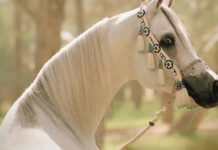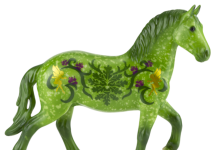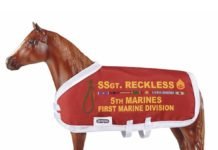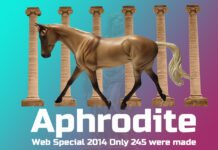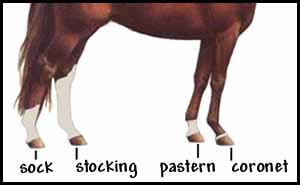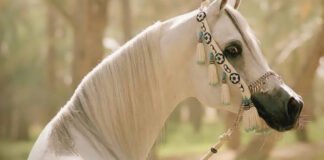Just like humans wear socks that are peds, ankle, mid-calf and knee-hi’s, our horse friends sport their own leg markings, which are usually named based on the highest area of the leg they cover. No two markings are the same, making them unique to each and every horse.
From shortest to tallest, common leg markings are:
- Ermine: small, dark colored spot touching the hoof or in the coronet band. Usually where the ermine spot touches the hoof, the hoof will have a darker color beneath the spot, but not always.
- Coronet: a band of white along the hoof wall in the coronet band. It is usually no more than an inch above the hoof.
- Pastern: white marking from the hoof up, but not extending beyond the fetlock.
- Fetlock: a white marking extending up and sometimes slightly over the fetlock.
- Sock or Boot: a white marking extending up the leg, but not quite to the knee or hock.
- Stockings: a white mark that extends high up the leg over the knee and hock.

Other terms used to describe leg markings are listed below:
- Irregular: used to describe leg markings with uneven edges.
- Partial: used to describe markings that extend up to a certain part on the leg, but are sometimes dark on one side or not quite completely white. Usually used to describe socks and short markings.
- High White: used to describe a stocking that extends up onto the body of the horse, usually characteristic of a sabino color pattern.
Leg markings can vary greatly in size and shape and are very helpful to describe or identify a horse. They can be used in the same way fingerprints are used to identify humans. In the end, it’s good to know that all socks aren’t created equal when it comes down to identifying your horse.






